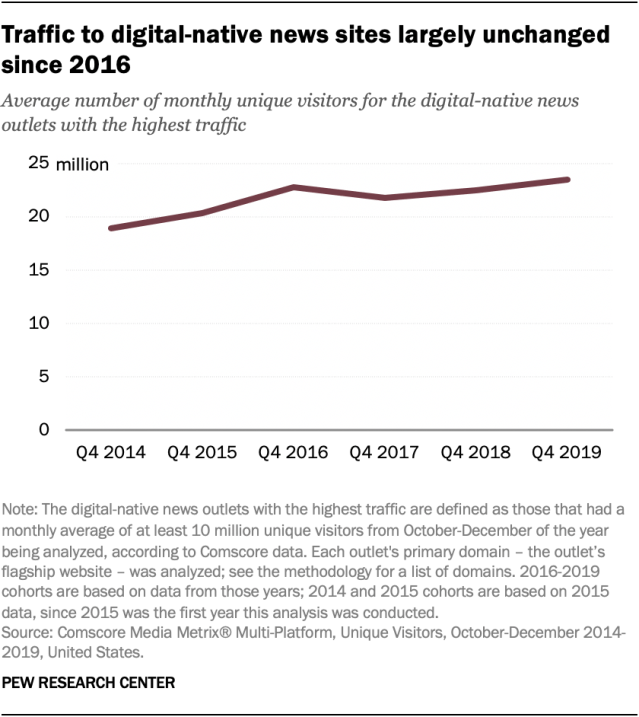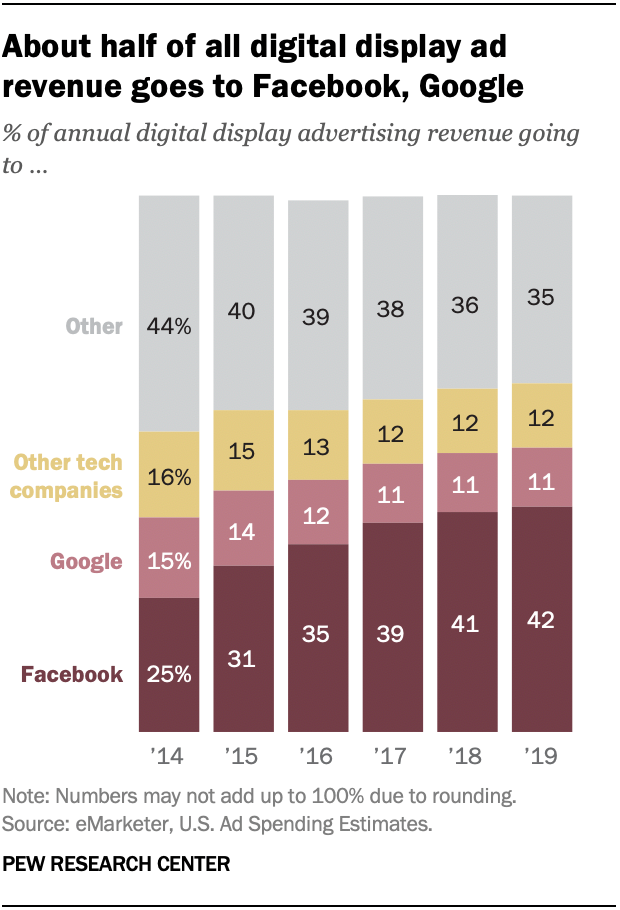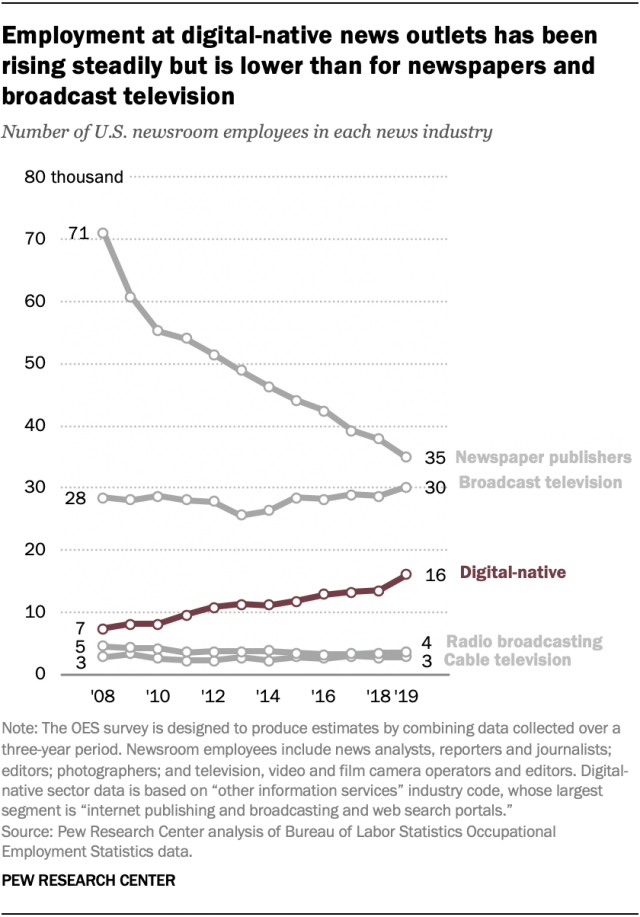Digital-native news outlets – those “born on the web” – have seen a wave of cuts since the outbreak of the coronavirus as financial troubles continue to roil the news media. Quartz laid off 80 staffers as its advertising revenue declined by over half. BuzzFeed shut down its divisions in the UK and Australia while furloughing dozens in the United States, and Vox furloughed about 100. The Outline has shut down entirely.
Here are key facts about digital-native news organizations, based on Pew Research Center analyses of data from Comscore, eMarketer and other sources. All data predates the current downturn related to the coronavirus.
- Traffic to digital-native news sites has plateaued in recent years. After rising from 2014 to 2016, it remained steady through 2019. The average monthly number of fourth-quarter unique visitors for the primary domains of these outlets in 2019 was 23.5 million, up only 3% from 2016, when it was 22.8 million. (The digital-native news outlets included in this analysis are those whose primary domain – the outlet’s flagship website – averaged at least 10 million unique visitors per month from October to December of each year analyzed, according to Comscore, a cross-platform audience measurement company. There were 46 such outlets in 2019; for a full list of outlets and collection methods, see the methodology.)
- A majority of digital display ad revenue goes to two tech companies. The total number of digital display advertising dollars (to all sites, not just news sites) has been rising rapidly, more than tripling from $21 million in 2014 to $71 million in 2019. But in 2019, about half (53%) of digital display ad revenue went to just two companies: Facebook (42%) and Google (11%). Another 12% went to other tech companies, including Amazon; Verizon Media Group, which owns Yahoo and AOL; Twitter; and Microsoft, among others.
- Employment at digital-native news outlets was steadily rising before the outbreak but was still far lower than at newspapers or broadcast TV (local and network). In 2019, there were about 16,000 newsroom employees at digital-native news organizations, roughly double the figure from 10 years prior, but they were outnumbered by newsroom employees at newspapers (34,950) and in broadcast TV (30,120).
- Digital-native news organizations in 2018 were about half as likely to undergo layoffs as newspapers, despite a spate of high-profile layoffs in digital media that year. While 27% of large newspapers experienced layoffs in 2018, only 14% of digital-native news outlets did.
Note: See methodology for more details on digital-native news site traffic and digital display revenue.







